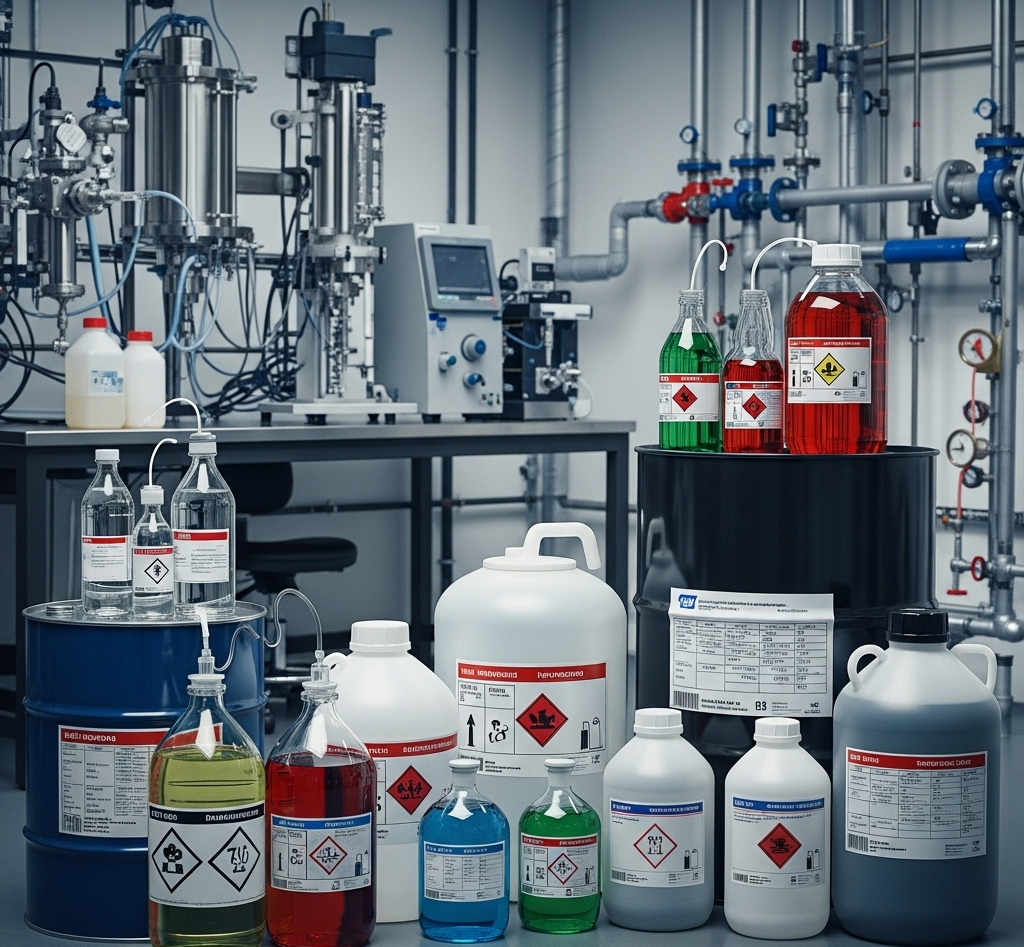
Effective procurement of industrial chemicals and processing agents is critical for industries such as manufacturing, pharmaceuticals, and agriculture. These materials are often hazardous, tightly regulated, and subject to volatile market conditions. A strategic approach to procurement ensures cost efficiency, compliance, and uninterrupted operations. Below, we explore key considerations and best practices for managing this complex process.
Industrial chemicals and processing agents encompass a wide range of substances, from solvents and catalysts to specialty reagents. Procurement teams must navigate:
Regulatory Compliance: Chemicals are subject to strict regulations, such as REACH in Europe, TSCA in the U.S., and GHS globally. Non-compliance can result in fines, shipment delays, or operational shutdowns.
Supply Chain Volatility: Geopolitical events, raw material shortages, and transportation disruptions can affect availability and pricing.
Safety and Storage Requirements: Many chemicals are hazardous, requiring specialized handling, storage, and transportation to ensure worker safety and environmental protection.
Partner with reliable suppliers who demonstrate compliance with safety and environmental standards.
Negotiate long-term contracts to secure stable pricing and priority access during shortages.
Conduct regular supplier audits to ensure quality and adherence to regulations.
Use inventory management software to track chemical usage, expiration dates, and reorder points.
Adopt a just-in-time (JIT) approach to minimize storage costs while ensuring availability.
Maintain safety data sheets (SDS) for all chemicals to comply with workplace safety regulations.
Analyze historical consumption patterns and production schedules to predict future chemical needs.
Monitor market trends, such as fluctuations in raw material costs, to time purchases strategically.
Use predictive analytics to anticipate supply chain disruptions and adjust procurement plans.
Source eco-friendly chemicals and agents to align with corporate sustainability goals.
Work with suppliers who offer take-back programs or recycling options for used chemicals.
Evaluate the lifecycle impact of chemicals to reduce waste and environmental harm.
Stay updated on regulatory changes and train procurement teams on compliance requirements.
Implement risk assessment protocols to evaluate suppliers, transportation methods, and storage conditions.
Maintain clear documentation for audits and inspections by regulatory bodies.
Price Volatility: Hedge against price swings by diversifying suppliers and exploring bulk purchasing agreements.
Supply Shortages: Develop contingency plans, such as identifying alternative suppliers or substitute chemicals.
Complex Logistics: Partner with logistics providers experienced in handling hazardous materials to ensure safe and timely delivery.
Modern procurement relies heavily on technology. Tools like enterprise resource planning (ERP) systems, e-procurement platforms, and blockchain can streamline processes:
ERP Systems: Integrate procurement with inventory and production for real-time visibility.
E-Procurement Platforms: Automate purchase orders, approvals, and supplier communication.
Blockchain: Enhance traceability and transparency in the chemical supply chain.
Managing the procurement of industrial chemicals and processing agents requires a balance of strategic planning, regulatory diligence, and technological innovation. By fostering strong supplier relationships, leveraging data, and prioritizing compliance, businesses can optimize costs, mitigate risks, and support sustainable operations. A proactive approach to procurement not only ensures operational efficiency but also positions companies to adapt to an ever-evolving industrial landscape.
© 2025 Lasso Supply Chain Software LLC
Get instant access to our report on the Top Procurement Trends of 2025.
Get instant access to our report on the Top Procurement Trends of 2025 by filling out the form below.
